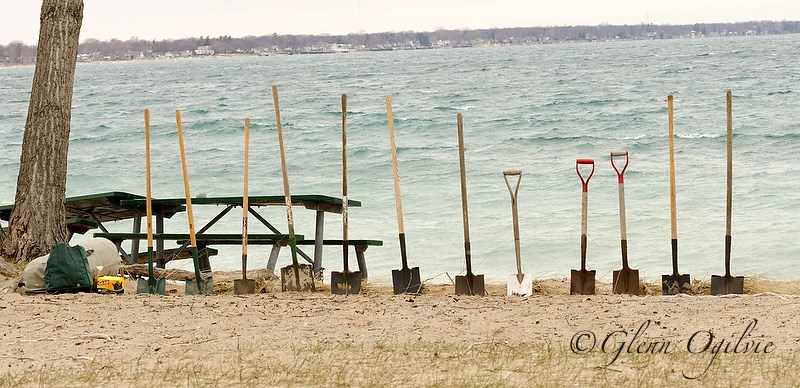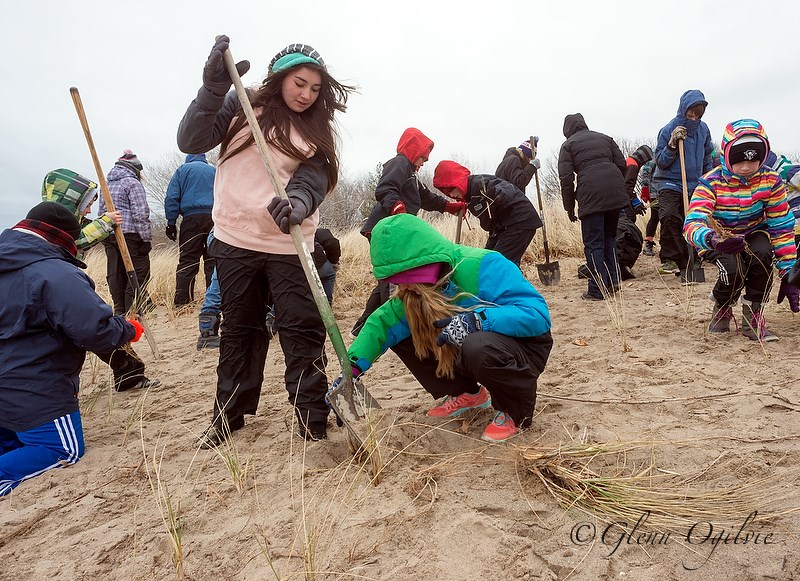Cathy Dobson
Rather than see their favourite local beach wash away, local students are getting their hands dirty and participating in a stewardship program this spring.
“These are kids trying to make a difference,” says teacher Melissa Dent. She applied for program funding this year so that as many as 100 kids with the Lambton Kent District School Board can be involved.
Dent and Kim Gledhill from Natures Way secured $9,000 from the Ontario Great Lakes Guardian Fund, which was set up to help people restore their corner of the Great Lakes.
Wave action from weather events like Hurricane Sandy is eroding the beaches along Lake Huron, Dent said.
The metal groins extending into the water from Canatara Beach help to some degree but are very ineffective for some areas, said Gledhill.
“Planting dune grasses and other native species is the natural method of erosion control and protects the entire shoreline,” she said.
“We’re losing a lot of sand and if we don’t protect it, the beach will turn into nothing but stones over a period of years.”
It’s estimated only 2% of the dune grasses that naturally grew along the Lake Huron shoreline still exist.
Dent and Gledhill have designed a school program that teaches about the power of wave action, the need to protect the shoreline, the beach and the habitat it provides, and the diversity that needs to be maintained in natural areas like Canatara Park.
This week, two dozen students from Wyoming Public School where Dent teaches were at the beach in freezing cold temperatures to plant dune grasses, pull invasive species like garlic mustard, and hike through the Carolinian Forest.
In hooded parkas and thick mitts, they braved the weather and got to work.
In a few weeks, students from Alexander Mackenzie Secondary School will build a boardwalk and fencing to encourage beach users to stay off the dune grass. Students from King George VI School are also scheduled to take part in the program, which also involves groups like Return the Landscape, the Lake Huron Coastal Centre and Sarnia Urban Wildlife.
“It’s incredibly important,” said Gledhill. “These sandy areas are vital for habitat.”
Once the dune grasses take hold, more native plants will be added including milkweed and switch grass, Viper’s Bugloss and Blazing Stars to attract monarch butterflies, Butler’s snakes, Hognose snakes and skinks back to the region.
Gledhill and Dent have been spearheading the program for the past three years but have never received funding before.
“The beach is suffering significant damage,” said Dent. “These students are learning about biodiversity and doing something to protect it."

